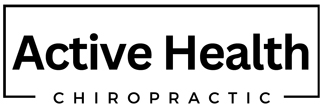Introduction
Rolling over is one of the first major physical milestones your baby will achieve, typically between 3 to 6 months of age. This movement helps build the strength and coordination needed for sitting, crawling, and eventually walking. At Active Health Chiropractic, we understand the importance of early development and want to support parents with simple, safe techniques to help their babies reach these milestones.
By using movement strategies that encourage your baby to cross their arms and legs over the midline of their body, you can stimulate the muscles and neurological patterns needed for rolling. These small, playful movements can make a big impact on your baby’s motor development!
So let’s walk through what rolling over involves and how you can help your baby reach this exciting milestone.
So What is “Rolling Over”?
Rolling over is your baby’s ability to move from their back to their tummy (or vice versa) using a coordinated movement of the head, shoulders, torso, and hips. It requires a combination of core strength, head control, and neurological maturity.
There are typically two phases:
-
Back to tummy (usually learned first)
-
Tummy to back (often comes slightly later)
While it may seem like a simple motion, rolling is a crucial sign that your baby is developing good motor control and body awareness.
How Babies Develop the Ability to Roll
Rolling is built on a foundation of:
-
Tummy time to strengthen neck and upper back muscles
-
Visual tracking to encourage head turning and body follow-through
-
Core activation to engage abdominal and oblique muscles
-
Midline crossing movements, which help babies learn how to coordinate both sides of their body
Many babies need a little encouragement to get started. That’s where midline techniques can help!
Techniques to Encourage Rolling Over
At Active Health Chiropractic, we love helping parents support their baby’s development in simple and safe ways. Here are a few strategies we often recommend:
1. Midline Crossing with Arms and Legs (Watch Video Demonstration)
-
Gently take your baby’s left arm and right leg and guide them across the center of the body toward the opposite side.
-
This helps the baby feel what a rolling motion is like and activates the muscles used for the roll.
-
Switch sides and repeat with the opposite limbs.
2. Toy Tracking Across Midline
-
Use a soft toy to catch your baby’s attention and move it slowly across their field of vision, encouraging them to turn their head and shoulders.
-
When they reach with one arm across their body, they naturally begin the rolling motion.
3. Tummy Time with a Twist
-
During tummy time, place your baby’s arms slightly under their chest and gently assist their hips in shifting side to side.
-
This rocking motion helps initiate the core movement needed for rolling.
4. Leg-to-Torso Tucks
-
With your baby lying on their back, gently bend one leg toward their opposite shoulder, encouraging a diagonal crunch.
-
This activates the obliques and gets them used to the rotational motion involved in rolling.
At-Home Tips to Support Rolling
-
Keep tummy time consistent—aim for several short sessions a day.
-
Allow plenty of free floor time (avoid too much time in swings, car seats, or loungers).
-
Celebrate effort! Smiles, claps, and encouragement motivate your baby to try again.
-
Be patient—every baby develops at their own pace.
Conclusion
Rolling over is a big step in your baby’s physical development, and you can support it with simple, playful movements that bring their arms and legs across midline. These strategies help build strength, balance, and coordination while also being a fun way to bond with your baby.
If you ever have concerns about your baby’s motor development, we’re here to help! Chiropractic care and early movement assessments can ensure your child is on the right track. Reach out to Active Health Chiropractic or visit our Pediatric Care page to learn more!
